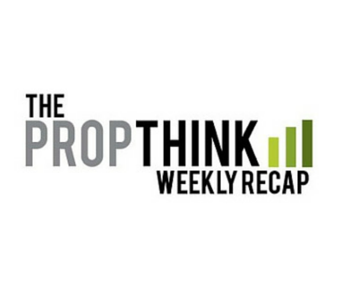Investors descend en masse on San Francisco next week for the annual JP Morgan healthcare conference, a major event for the sector that historically generates a tailwind for these stocks in the month beforehand. This year was no exception, with the SPDR S&P Biotech ETF (XBI) up almost 13% since the beginning of December. Against the S&P 500’s flat performance in the same timeframe, one can see why it’s good to be a biotech investor this season. Note that the XBI, as opposed to the iShares Nasdaq Biotechnology ETF (IBB), is weighted more heavily towards small and mid-cap biotechnology stocks.

Read Here’s what bluebird bio Investors Should Know About Sickle Cell Disease
BLUE broke above $100 in the Friday session, up 170% since Mr. Fink first called the stock a buy in October.
Our suggestion to PropThink Premium members to sell shares of Conatus Pharmaceuticals’ (CNAT) on Thursday – at a 60% gain – before phase 1/2 data for its lead drug candidate emricasan were released that afternoon was timely: the stock dropped more than 40% following. Emricasan is a pan-caspase inhibitor that the company believes may reduce the inflammation and fibrosis associated with insults to the liver (NASH, NAFLD, ACLF, etc). Emricasan’s mechanism of action is unique from other development-stage drugs targeting hepatic impairment (like Intercept’s [ICPT] OCA), because the drug is designed to reduce the activity of enzymes that mediate apoptosis (cell death), believed to initiate an inflammatory cascade culminating in hepatic fibrosis (read more).
Investors were disappointed with the results on Thursday, but we think the data weren’t as bad as the market made them out to be. Essentially, emricasan continues to show the same effect on biomarkers that it has in previous trials, and the ambiguous signals in Acute-on-Chronic Liver Failure patients shouldn’t be that surprising given the difficulty of treating this patient population. Management could have done a better job of telling the story, but expectations for this data were too high to begin with (evidenced by extremely high Implied Volatilty in CNAT options). Connatus has early NAFLD/NASH data due before the end of the quarter, and with the stock trading at the same levels it did prior to this data release, it may make sense for investors to get acquainted.
On Monday, Cempra (CEMP) announced results from the phase 3 SOLITAIRE-ORAL trial testing solithromycin against the approved fluoruquinolone, moxifloxacin, in Community Acquired Bacterial Pneumonia (CABP). SOLITAIRE-ORAL met its primary endpoint, with solithromycin demonstrating non-inferiority (NI, 10% non-inferiority margin) on early clinical response at 72 hours after therapy, when compared to moxifloxacin (78.2% and 77.9%, respectively). This endpoint in the Intent to Treat (ITT, or all randomized patients) population is the primary outcome that the U.S. FDA will evaluate, and a positive secondary endpoint in the trial should meet the requirements of the EMA, in Europe. Cempra plans to combine the results from this trial with data from the ongoing SOLITAIRE-IV study, due later this year, before filing a New Drug Application with the FDA. The company plans to update investors on enrollment in this second study sometime this spring. Days after the data hit, Cempra conducted a stock offering that should net around $138 million for the company, inclusive of the underwriter’s over-allotment option, bringing the company’s cash balance to over $200 million. That’s a serious warchest for a small antibacterial company. Read more about the data, and about Cempra in our previous coverage.
50% off your first month. Or, save $300 with an annual subscription.
Click Here to Register
One or more of PropThink’s contributors are long CEMP, CNAT, or BLUE.



